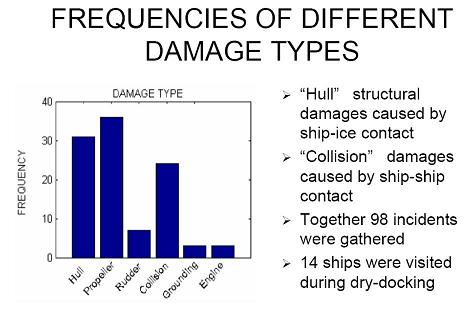Performance in Extreme Conditions
Backgrounds
Today the world lacks energy resources. As a results the oil price is end November 2006 higher and reaching new records. The design and operation of ships to get new energy resources is exploring new grounds. The use of the Northern Sea route, meaning transporting oil from the Northern part of Russia towards Europe or transporting oil via the Northern hemisphere reduce the transport distance with a factor of two.
Totally new ship concepts (maybe with some ice-going ability), tailored for the new future routes (see climate change above) will operate in new area. The use of special and large vessels to transport oil and LNG bit this at the same time implies that ships meet conditions different and outside from our previous experience. The use of new and larger vessels imply that there is an unknown risk in the operation. The use of larger vessels in shallow water or under ice conditions will imply the uncertainties in its behaviour and use.
Today with large interest of the community in sustainability and reduction of emissions the shipping industry needs to pay attention to those aspects as well. The subject connects wells with the background of the various CRS members such as : classification societies, navies, ship designers, system integrators and operators. The main focus is to support shipping operation safe and sound even in new and unpredictable circumstances.

Objectives
The S-SHIPPEX project focuses on safe and sound operation of vessels which are connected to the use of ships in extreme conditions. It will identify the risks in operation in practice such as what can go wrong and why. It will develop design and operational strategies to counteract the risk using the unique combination of hydro structural and design knowledge available in the CRS community but it will also connect with related experts such as AARC, P&I (insurance companies), universities and local authorities.
Expected Results
- Identification of sources for review of risk operation focussed on operation in ice, shallow water and heavy seas
- Review of safety aspects of ship manoeuvring for each of the above topics and identification of risk of main ship elements of hull damage, propeller damage, rudder damage, machinery damage, collision and grounding
- Review of damages from open literature sources and identification of risks in performance
- Review and classification of types of loading
- Identification of ship performance related issues in ice covered and shallow water
